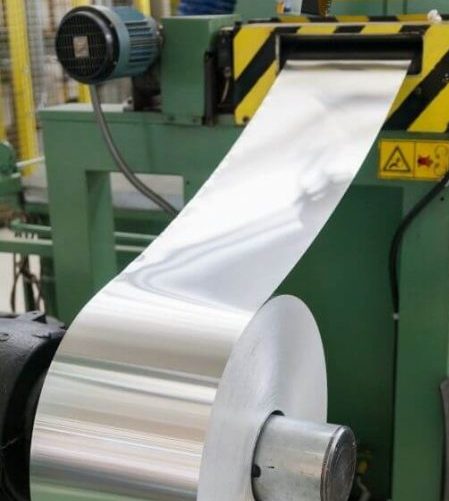Metal Stamping: Secret Factors To Consider for Quality and Performance
Metal Stamping: Secret Factors To Consider for Quality and Performance
Blog Article
Metal Marking Technologies: Elevating Manufacturing Processes for Superior Outcomes
In the world of making procedures, steel stamping has long been a cornerstone method for generating a range of precision components. With the relentless march of technological innovation, the landscape of steel marking is going through a considerable improvement.
Development of Metal Stamping Techniques

Furthermore, advancements in material science have actually led to the advancement of high-strength alloys that can now be flawlessly stamped into complex shapes, catering to a broader series of commercial applications. The integration of robotics and expert system has actually further optimized the marking process by improving speed and precision while minimizing the threat of human mistake.

Impact of Advanced Products
Have sophisticated products changed steel marking processes significantly in the production sector? By using materials such as high-strength alloys, progressed composites, and ingenious coverings, steel marking processes can now produce elements that are lighter, more powerful, and a lot more durable than ever in the past.
These advanced materials use superior mechanical properties, corrosion resistance, and thermal stability, enabling suppliers to meet the demands of modern markets such as aerospace, automotive, and electronics. In addition, the use of advanced materials in metal stamping has actually facilitated the production of complex geometries and elaborate styles that were previously unattainable with typical approaches.
Furthermore, the implementation of advanced materials has brought about reduced material waste, reduced manufacturing prices, and much shorter lead times, making metal stamping processes extra economical and lasting. As innovation remains to advancement, the impact of advanced products on metal stamping procedures is anticipated to drive additional advancement and improve the competitiveness of producers in the worldwide market.
Automation in Metal Stamping
The evolution of steel marking procedures driven by the assimilation of advanced materials has actually established the phase for considerable improvements in automation within the production sector. Automation in steel stamping has transformed production procedures, improving efficiency, accuracy, and general outcome high quality. Through the utilization of robotics, sensing units, and computer-controlled systems, jobs that were when manual and taxing can currently be performed with exceptional speed and precision.
Automation in metal marking not only accelerates manufacturing rates yet additionally makes sure consistency in the production procedure. By minimizing human treatment, the risk of mistakes is substantially reduced, resulting in higher degrees of item uniformity and integrity. Furthermore, automation enables manufacturers to undertake complicated marking tasks that would certainly be tough or impractical to achieve by hand.
Furthermore, automation in steel marking adds to a safer working setting by decreasing the need for workers to engage in repeated or unsafe tasks - Metal Stamping. This shift towards automation not only enhances performance yet also leads the way for the future of production, where innovation plays a main duty in driving operational excellence
High Quality Control and Examination Solutions
With a concentrate on accuracy and integrity, quality control and evaluation systems play a critical role in making certain product quality in steel marking procedures. These systems are designed to keep track of every phase of production, from product examination to the end product, to assure that all parts meet the required standards. By implementing advanced technologies such as optical inspection systems, coordinate determining makers (CMM), and automated gauging tools, makers can detect also the tiniest inconsistencies in measurements, surface high quality, and overall integrity of stamped components.

Sustainability Practices in Steel Stamping
Building upon the foundation of accuracy and integrity developed with quality assurance and assessment systems, the combination of sustainable practices in steel marking procedures is progressively ending up being a focal point for manufacturers seeking to reduce environmental impact and maximize source usage. Sustainability practices in steel marking incorporate a variety of efforts aimed at lowering waste generation, power consumption, and greenhouse gas emissions throughout the production process.
One secret element of sustainability in view publisher site metal marking is the adoption of environment-friendly products and modern technologies that promote recyclability and waste decrease. By utilizing recycled materials and applying energy-efficient equipment, makers can reduce their carbon footprint and add to pop over here a more lasting production cycle. In addition, maximizing production procedures to minimize product waste and energy use not only profits the atmosphere but additionally leads to set you back savings for companies over time.
Moreover, the application of lasting practices in metal stamping can boost brand name online reputation and interest environmentally mindful consumers. As sustainability continues to obtain significance in the manufacturing sector, integrating eco-friendly efforts right into steel stamping procedures is crucial for long-term success and competitiveness in the market.
Final Thought
To conclude, metal marking strategies have dramatically developed gradually, including advanced materials and automation to enhance manufacturing processes. Quality control and examination systems play an essential function in making sure superior outcomes, while sustainability techniques are increasingly being executed to minimize ecological influence. These technologies in metal marking have actually changed the industry, leading to more lasting and effective manufacturing techniques for numerous markets.
Metal stamping, when a guidebook and labor-intensive procedure, has actually transformed into a highly automated and sophisticated method of shaping metal sheets into various forms and layouts.Have innovative products changed steel marking processes dramatically in the production market? By using materials such as high-strength alloys, progressed composites, and innovative finishes, metal stamping procedures can currently create parts hop over to these guys that are lighter, more powerful, and a lot more resilient than ever before.
The advancement of steel marking procedures driven by the assimilation of innovative materials has established the phase for substantial innovations in automation within the manufacturing sector.In conclusion, metal marking methods have considerably progressed over time, including advanced materials and automation to improve producing procedures.
Report this page